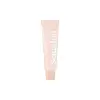What's inside
What's inside
 Key Ingredients
Key Ingredients

No key ingredients
 Benefits
Benefits

 Concerns
Concerns

No concerns
 Ingredients Side-by-side
Ingredients Side-by-side

Water
Skin ConditioningGlycerin
HumectantMethylpropanediol
SolventButylene Glycol
HumectantCaprylic/Capric Triglyceride
Masking1,2-Hexanediol
Skin ConditioningArginine
MaskingCarbomer
Emulsion StabilisingBrassica Oleracea Capitata Leaf Extract
Skin ConditioningAllium Cepa Bulb Extract
Skin ConditioningArctium Lappa Root Extract
Skin ConditioningCichorium Intybus Root Extract
MaskingMusa Sapientum Fruit Extract
Skin ConditioningEthylhexylglycerin
Skin ConditioningAmmonium Polyacryloyldimethyl Taurate
Emulsion StabilisingAcrylates/C10-30 Alkyl Acrylate Crosspolymer
Emulsion StabilisingHydroxyethyl Acrylate/Sodium Acryloyldimethyl Taurate Copolymer
Emulsion StabilisingParfum
MaskingDisodium EDTA
Bifida Ferment Lysate
Skin ConditioningLactobacillus Ferment Lysate
Skin ConditioningLactobacillus/Milk Ferment Filtrate
Skin ConditioningLactococcus Ferment Lysate
Skin ConditioningSaccharomyces Ferment Lysate Filtrate
Skin ConditioningStreptococcus Thermophilus Ferment
HumectantSea Water
HumectantSorbitan Isostearate
EmulsifyingMaltodextrin
AbsorbentHydrolyzed Gardenia Florida Extract
AntioxidantSodium Hyaluronate
HumectantHydrolyzed Collagen
EmollientHydrolyzed Hyaluronic Acid
HumectantSodium Acetylated Hyaluronate
HumectantWater, Glycerin, Methylpropanediol, Butylene Glycol, Caprylic/Capric Triglyceride, 1,2-Hexanediol, Arginine, Carbomer, Brassica Oleracea Capitata Leaf Extract, Allium Cepa Bulb Extract, Arctium Lappa Root Extract, Cichorium Intybus Root Extract, Musa Sapientum Fruit Extract, Ethylhexylglycerin, Ammonium Polyacryloyldimethyl Taurate, Acrylates/C10-30 Alkyl Acrylate Crosspolymer, Hydroxyethyl Acrylate/Sodium Acryloyldimethyl Taurate Copolymer, Parfum, Disodium EDTA, Bifida Ferment Lysate, Lactobacillus Ferment Lysate, Lactobacillus/Milk Ferment Filtrate, Lactococcus Ferment Lysate, Saccharomyces Ferment Lysate Filtrate, Streptococcus Thermophilus Ferment, Sea Water, Sorbitan Isostearate, Maltodextrin, Hydrolyzed Gardenia Florida Extract, Sodium Hyaluronate, Hydrolyzed Collagen, Hydrolyzed Hyaluronic Acid, Sodium Acetylated Hyaluronate
 Reviews
Reviews

Ingredients Explained
These ingredients are found in both products.
Ingredients higher up in an ingredient list are typically present in a larger amount.
1,2-Hexanediol is a synthetic liquid and another multi-functional powerhouse.
It is a:
- Humectant, drawing moisture into the skin
- Emollient, helping to soften skin
- Solvent, dispersing and stabilizing formulas
- Preservative booster, enhancing the antimicrobial activity of other preservatives
Arginine is an amino acid that is important for human development. Your body uses is it to produce hair keratin and skin collagen.
As a cosmetic ingredient, Arginine has antioxidant properties and can also help repair damaged skin. This ingredient is derived either synthetically or from animals.
Arginine isn't fungal acne safe when used in the presence of other lipids (fats, fatty acids, oils, esters, etc). Oils and fats occur naturally within the skin, so take caution when using Arginine if you're prone to fungal acne.
Learn more about ArginineThis ingredient is an emollient, solvent, and texture enhancer. It is considered a skin-softener by helping the skin prevent moisture loss.
It helps thicken a product's formula and makes it easier to spread by dissolving clumping compounds.
Caprylic Triglyceride is made by combining glycerin with coconut oil, forming a clear liquid.
While there is an assumption Caprylic Triglyceride can clog pores due to it being derived from coconut oil, there is no research supporting this.
Learn more about Caprylic/Capric TriglycerideCarbomer is a polymer of acrylic acid. Its main role is to create a gel consistency.
A high amount of carbomer can cause pilling or balling up of products. Don't worry, most products contain 1% or less of carbomer.
Glycerin is already naturally found in your skin. It helps moisturize and protect your skin.
A study from 2016 found glycerin to be more effective as a humectant than AHAs and hyaluronic acid.
As a humectant, it helps the skin stay hydrated by pulling moisture to your skin. The low molecular weight of glycerin allows it to pull moisture into the deeper layers of your skin.
Hydrated skin improves your skin barrier; Your skin barrier helps protect against irritants and bacteria.
Glycerin has also been found to have antimicrobial and antiviral properties. Due to these properties, glycerin is often used in wound and burn treatments.
In cosmetics, glycerin is usually derived from plants such as soybean or palm. However, it can also be sourced from animals, such as tallow or animal fat.
This ingredient is organic, colorless, odorless, and non-toxic.
Glycerin is the name for this ingredient in American English. British English uses Glycerol/Glycerine.
Learn more about GlycerinWater. It's the most common cosmetic ingredient of all. You'll usually see it at the top of ingredient lists, meaning that it makes up the largest part of the product.
So why is it so popular? Water most often acts as a solvent - this means that it helps dissolve other ingredients into the formulation.
You'll also recognize water as that liquid we all need to stay alive. If you see this, drink a glass of water. Stay hydrated!
Learn more about Water